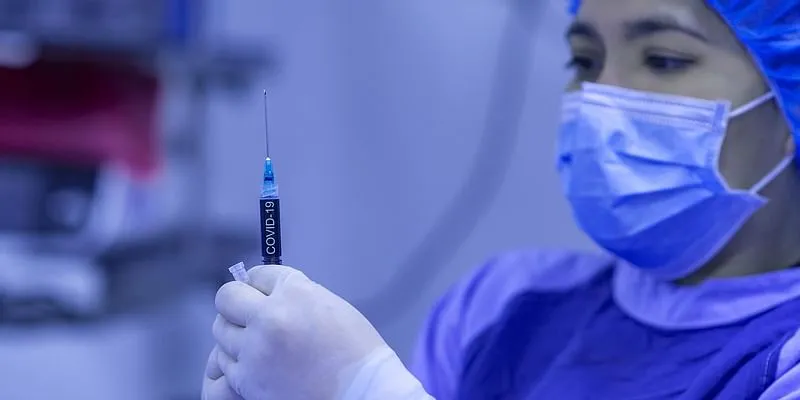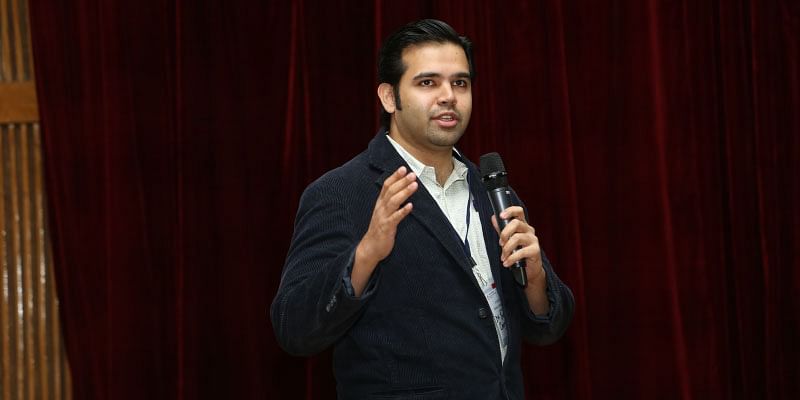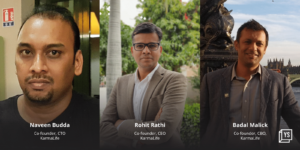As the second wave of the COVID-19 pandemic wreaks havoc across the country, Dr Jagdish Chaturvedi, a sinus specialist at Fortis Hospital, urged citizens to go get vaccinated. Dr Jagdish, who is also the Founder and CEO of medtech startup, HiiiH Innovations, added that although the vaccine is not a cure, it’s the best bet to prevent the disease and from developing serious complications.

While speaking at YourStory’s ‘Ask the Doc’ live show, Dr Jagdish, who wears many hats, addressed a wide range of questions related to the pandemic and the virus.
The ENT (Ear, Nose, Throat) surgeon, medical device innovator, author, YouTuber, and stand-up comedian explained that people can still contract the virus post vaccination but it will ensure that the patient does not get serious and land up in ICU (Intensive Care Unit).
“Vaccine will keep the disease mild and will give the body some time to develop immunity against the virus,” he said.
Here are some of the key highlights from his chat with Yourstory Founder and CEO Shradha Sharma.
Typical Second-Wave Characteristics
Dr Jagdish explained that the current situation is typical of a viral pandemic, where the second wave virus mutates and has the power to spread more. He added that the possibility of a third wave cannot be ruled out, but those are typically lighter in nature. The main reason behind that is that by then the virus does not get enough hosts, as herd immunity starts setting in.
“But this does not mean we can drop our guards because we don’t know what mutation can happen. So we need to take precautions and stay alert from the beginning,” he said.
The first wave mainly affected older people but the second wave has largely hit the 35 years to 45 years population more. Even children have not been spared in this wave. However, very few children have developed very serious symptoms, he shared.
Vaccine hesitation
Busting myths around vaccine hesitation among people with diseases such as diabetes and hypertension, Dr Jagdish explained that the vaccine has been designed in a way that it is safe for such people.
“People with vulnerabilities like diabetes or hypertension need to take the vaccine. The vaccine has been made to protect them from the virus,” he said.
He explained that post-vaccination, one still needs to exercise all caution. No vaccine gives complete prevention against any disease, instead, it helps the body fight better, the doctor explained.

(Image source: Pixabay)
Viral load
Viral load is a term that one hears a lot these days. It means the number of viral particles in the micro-droplets which can infect an individual. Dr Jadish explained that the second wave is characterised by the high viral load which means the infecting power of even a small droplet is very high.
This happens when people interact with more people, do not wear masks or take proper precautions. If an individual tests positive for COVID-19, they need to isolate and mask up properly to reduce the viral load.
The virus is now not spreading as much through touch or contact but via microdroplets in the air. It is advised that people keep their homes well ventilated by keeping windows open, the doctor said.
Do not panic, even if you’ve caught the virus
Dr Jagdish appealed to people not to panic about oxygen shortage at hospitals or dropping oxygen levels in their body. Very few people will actually reach a point where they need to be given oxygen, he explained.
“Overreaction is a survival instinct but we need to believe in our immune system. Right now, the reason for the oxygen crisis might be overprotectiveness where people are panicking and blocking beds even when the seriousness level is low,” he said.
He advised patients to regularly monitor their oxygen saturation levels, practise breathing in a prone position (lying face down over belly) to maintain oxygen levels above 90.
“In the second wave, it might take about 10-14 days for full recovery instead of four to five days in the first wave. Have fruits, plenty of liquids, and sugar if not diabetic, to feel better. Don’t panic and remember that your body feels weak because it is fighting the virus.”
People must not self-medicate and consult verified doctors for medications, if they are managing the symptoms at home, the doctor said. Vitamins D, C, and multivitamins along with Zinc improve immunity and are helpful for faster recovery, he said.
The oxygen worry
According to Dr Jagdish, the anxiety among people is mainly coming from the fear of dropping oxygen levels. Early testing and detection of the virus can ensure the infection and the disease does not become severe.
In case hospitalisation is required and beds are unavailable, patients should try to get oxygen concentrators for home and monitor their saturation levels, he said.






![Read more about the article [DesignUp 2021] Stripe Partners’ Simon Roberts on the importance of curiosity, flexibility, and adaptability in the pandemic era](https://blog.digitalsevaa.com/wp-content/uploads/2021/06/DU6-1622480985353-300x150.png)


![Read more about the article [Product Roadmap] How a focus on simplicity and user experience got MoneyTap the scale it was looking for](https://blog.digitalsevaa.com/wp-content/uploads/2021/03/PM1-1614692063719-300x150.png)
